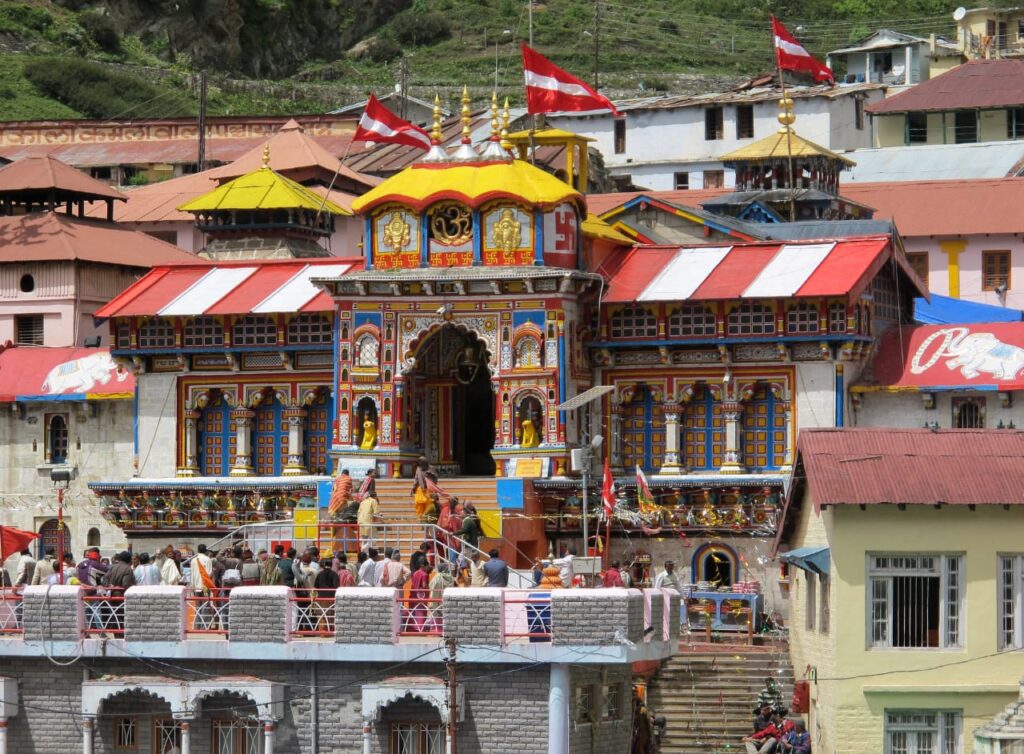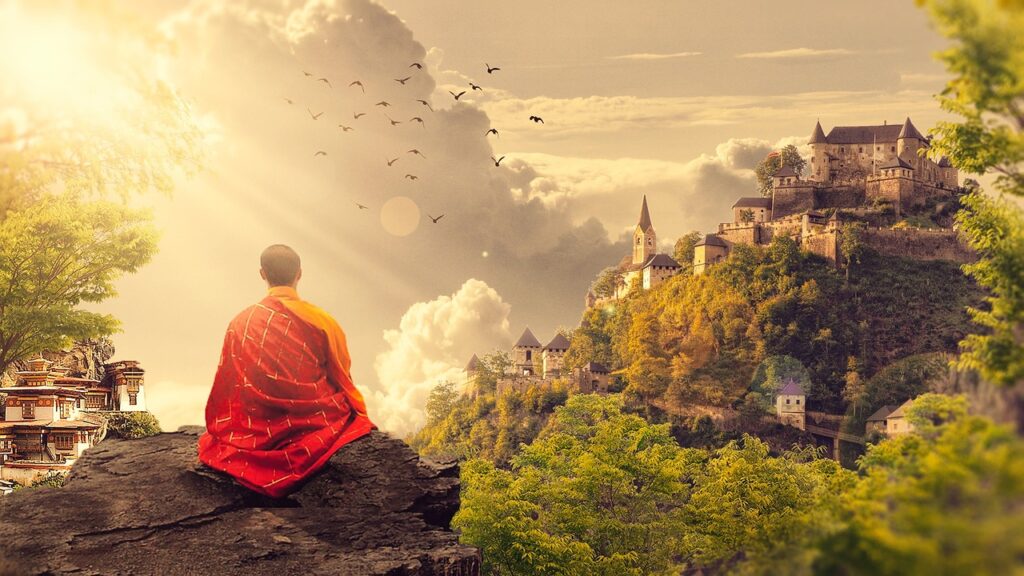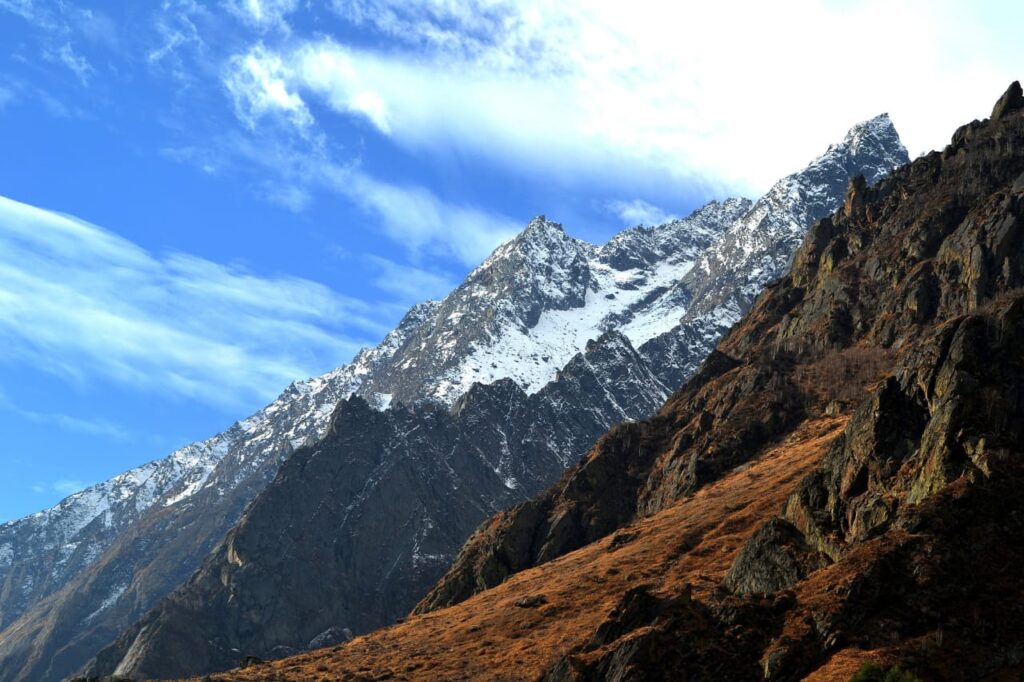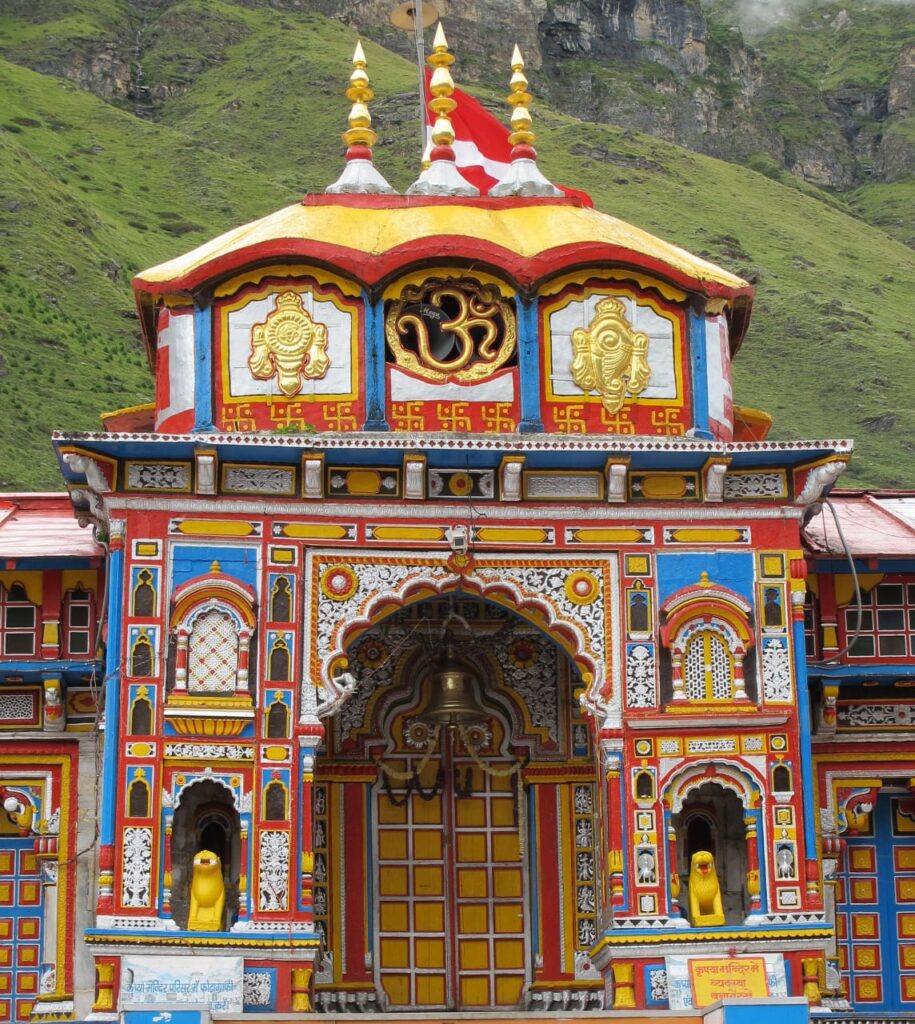Introduction:
- Set the scene by describing the beauty and grandeur of the Badrinath Temple nestled in the majestic Himalayas.
- Highlight the temple’s significance as one of the holiest Hindu pilgrimage sites in India.
- Capture the reader’s curiosity by mentioning the fascinating legends and stories associated with the temple.
Table of Contents
Badrinath Temple: Exploring the Sacred Abode of Lord Vishnu

Badrinath Temple, nestled amidst the majestic Himalayas, is one of the most revered pilgrimage sites in India. It holds immense religious significance for Hindus and attracts thousands of devotees from all over the world. This article takes you on a journey to explore the rich history, architectural marvels, rituals, and the spiritual aura of Badrinath Temple.
Historical Significance
Badrinath Temple has a rich historical heritage dating back several centuries. It is believed to have been established by Adi Shankaracharya, the 8th-century Hindu philosopher and theologian. The temple is dedicated to Lord Vishnu, particularly in his form as Badrinarayan. According to Hindu mythology, Lord Vishnu meditated in this region to save mankind from suffering during the Kali Yuga (the current age of darkness and turmoil).
Location and Accessibility
Badrinath Temple is located in the Chamoli quarter of Uttarakhand, India. positioned at an altitude of 3,415 measures( 11,204 bases) above ocean position, the tabernacle is perched on the banks of the Alaknanda River. The nearest field is the gleeful entitlement field in Dehradun, roughly 317 kilometers( 197 long hauls) down. The city of Badrinath is well- connected by road, making it accessible from major metropolises like Rishikesh, Haridwar, and Delhi.
Architectural Marvels of Badrinath Temple

The Badrinath Temple is renowned for its architectural splendor and intricate craftsmanship. The temple complex consists of various structures that exhibit traditional Hindu temple architecture.
Main Temple Structure: The main temple stands tall with its conical stone roof and vibrant facade. The intricate carvings and sculptures on the outer walls depict various mythological scenes and deities.
Mandapa and Ardha Mandapa: The temple complex features a spacious mandapa (assembly hall) where devotees gather for prayers and ceremonies. The ardha mandapa (half hall) acts as an antechamber leading to the sanctum sanctorum.
Sanctum Sanctorum: The sanctum sanctorum houses the idol of Lord Badrinarayan, a black stone statue intricately carved and adorned with precious jewels. The sanctum is considered the most sacred space within the temple.
Rituals and Worship at Badrinath Temple
Badrinath Temple is known for its daily rituals and worship practices. Devotees can witness the various ceremonies performed with utmost devotion.
Daily Puja and Aarti: The temple priests conduct regular pujas (religious rituals) and aartis (ceremonial worship with lamps) to honor Lord Badrinarayan. These rituals are accompanied by the enchanting sounds of conch shells and bells, creating a divine atmosphere.
Festivals and Celebrations: The temple comes alive during festivals like Maha Shivaratri, Janmashtami, and Diwali. These celebrations attract a large number of devotees who gather to seek blessings and participate in the vibrant festivities.
Spiritual and Cultural Importance

Badrinath Temple holds immense spiritual and cultural importance for Hindus worldwide.
Badrinath in Hindu Mythology According to Hindu Holy Writ, Badrinath is one of the four sacred Char Dham passage spots, inclusively known as the Chota Char Dham. It’s believed that visiting these four spots can help one attain moksha( emancipation) from the cycle of birth and death.
Badrinath as a Pilgrimage Site: Devotees consider Badrinath as the abode of Lord Vishnu, and a visit to this holy site is considered a significant milestone in their spiritual journey. The serene ambiance and majestic surroundings enhance the pilgrims’ devotion and offer a sense of tranquility.
Badrinath in Popular Culture: Badrinath Temple has been featured in various religious texts, literature, and movies, further enhancing its cultural significance. Its mention in ancient scriptures and portrayal in popular media has made it a symbol of divinity and spirituality.
Accommodation and Facilities for Pilgrims
To cater to the influx of pilgrims, Badrinath offers a range of accommodation options, including guesthouses, lodges, and ashrams. These establishments provide basic amenities and a comfortable stay for devotees during their pilgrimage. Additionally, there are several eateries and restaurants in the vicinity that serve traditional vegetarian cuisine, allowing visitors to savor the local flavors.
Exploring the Surrounding Natural Beauty
Apart from its spiritual allure, Badrinath and its surrounding areas are blessed with breathtaking natural beauty.
Mana Village: Situated near the Badrinath Temple, Mana Village is the last inhabited village on the Indian side of the Indo-Tibetan border. It offers picturesque vistas of snow-capped peaks, lush meadows, and gushing waterfalls.
Alaknanda River: The holy Alaknanda River flows alongside Badrinath, providing a serene backdrop for spiritual contemplation. The riverbanks offer peaceful spots for meditation and relaxation.
Tapt Kund Hot Springs: Located just below the Badrinath Temple, the Tapt Kund hot springs are believed to have healing properties. Devotees often take a dip in these natural thermal springs before entering the temple, considering it a purifying ritual.
Tips for Visitors and Travelers

For those planning a visit to Badrinath Temple, here are some helpful tips:
Best Time to Visit: The temple remains open from April to November, with the peak pilgrimage season being May to June and September to October. The weather is pleasant during these months, and the temple can be easily accessed.
Dress Code and Etiquette Callers are advised to dress modestly and maintain form while inside the tabernacle demesne. It’s customary to remove footwear before entering the sanctum sanctorum.
Local Cuisine and Food Options: Exploring the local cuisine is an essential part of any pilgrimage journey. Badrinath offers a variety of vegetarian dishes, including local delicacies like Kumaoni dal, Aloo ke Gutke, and Kachmauli.
Conclusion
Badrinath Temple, with its rich history, architectural beauty, and spiritual significance, continues to inspire millions of devotees. The divine aura, coupled with the breathtaking natural surroundings, makes it a truly enchanting destination. A visit to Badrinath offers not only a chance to seek the blessings of Lord Vishnu but also an opportunity to immerse oneself in the spiritual essence of the Himalayas.
FAQs
1. How old is Badrinath Temple? The Badrinath Temple has a history dating back several centuries, with its establishment attributed to Adi Shankaracharya in the 8th century.
2. Are there any accommodation options near Badrinath Temple? Yes, there are several guesthouses, lodges, and ashrams available for pilgrims visiting Badrinath. These establishments offer basic amenities and a comfortable stay.
3. Can non-Hindus visit Badrinath Temple? Yes, Badrinath Temple welcomes visitors of all faiths. However, it is important to respect the temple’s customs and traditions while visiting.
4. Is photography allowed inside the temple? Photography isn’t permitted inside the sanctum sanctorum of Badrinath Temple. still, photography is allowed in other areas of the tabernacle complex.
5. Are there any medical facilities available in Badrinath? Yes, there is a government hospital in Badrinath that provides medical assistance to pilgrims in case of emergencies or minor ailments.
